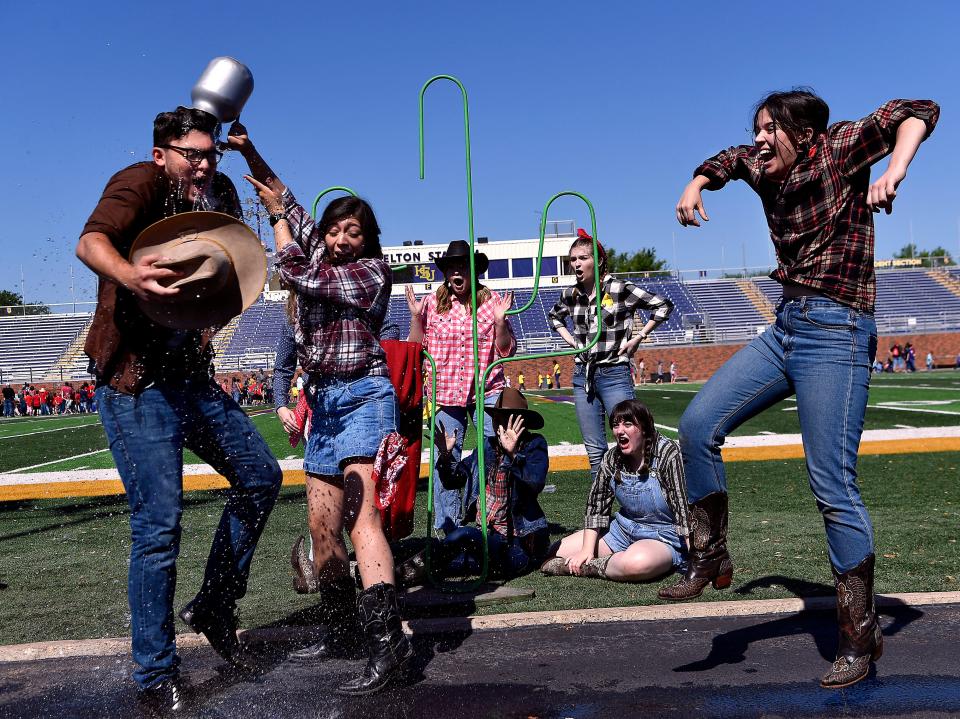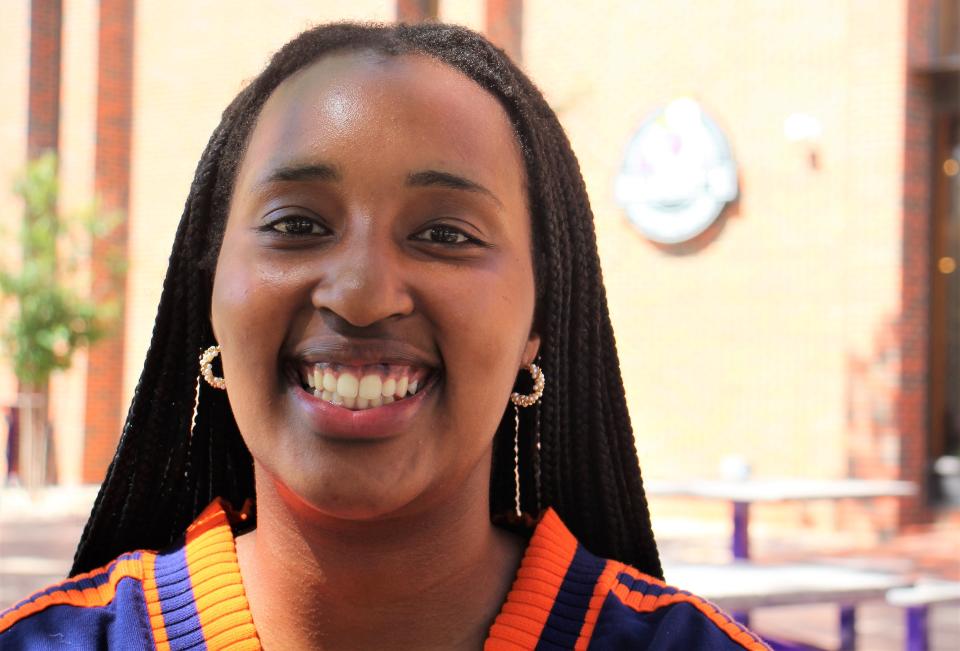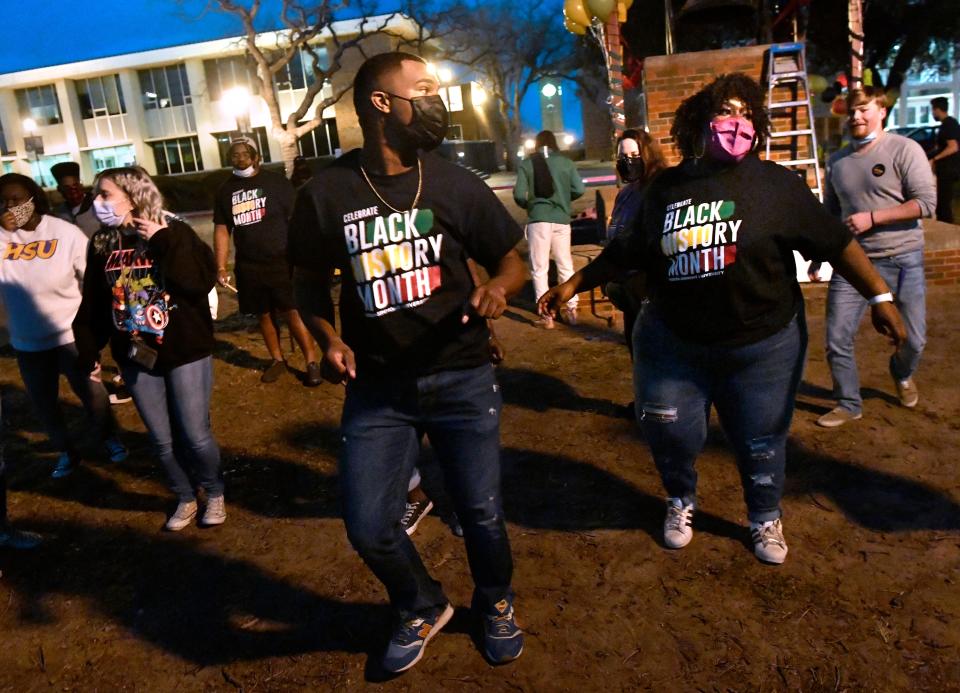Hardin-Simmons acceptance rate is up; goal now is student success
- Oops!Something went wrong.Please try again later.
The U.S. Supreme Court decision to strike affirmative action set off the expected chorus of reaction - support and protest.
And some confusion.
The focus was on colleges.
The court in a 6-3 vote struck down the affirmative action program at the University of North Carolina and in a 6-2 vote, at Harvard. In summary, considering race in the admission process is a violation of the Equal Protection Clause of the U.S. Constitution, the court ruled. Thus, affirmative action programs are unlawful.
Wrote Chief Justice John Roberts for the majority, "The student must be treated based on his or her experiences as an individual, not on the basis of race."
The decisions reversed a ruling 20 years ago that said race could be considered a factor in admissions, to get past discrimination.
More: No quotas: Abilene universities have still become more diverse
More: McMurry has gained Hispanic serving status, cut student expenses
First, what is affirmative action?
Encyclopedia Britannica defines affirmative action in the United States as "the active effort to improve employment, educational and other opportunities for members of groups that have been subjected to discrimination. Criteria for affirmative action include race, disability, gender identity, sexual orientation, ethnic origin and age."
Those cheering the ruling say it will make considerations more "colorblind." It was a word Justice Clarence Thomas used in his opinion.
Opponents say its a big step backward in fixing discrimination. Justice Sonia Sotomayor, said the ruling "stands in the way and rolls back decades of precedent and momentous progress."
In Abilene, home of three private four-year colleges, the ruling has little if any effect. Abilene Christian, Hardin-Simmons and McMurry have not used race consideration to enroll students, representatives at each institution say.
"The ruling does not affect us in any way," said Anthony Williams, who heads the office of Diversity, Equity and Inclusion at ACU. He doesn't believe it affects the other two colleges, either.
He offered that local campus demographics are changing anyway, and the result of intentional efforts over the years.
"We want to provide an opportunity that doors are open to all," Williams said.
Colleges are focusing on better ensuring that the collegiate experience is meaningful, and encouraging a student to stick with it through graduation. That includes making sure that a minority student feels welcome, is plugged in and is comfortable on campus, as well as helping with financial and emotions needs that many students face.
College costs a lot of money, even with scholarships. While Abilene college representatives believe a college education will make a difference in future employment, they also realize that debt may negate that aspiration. The cost could force a student to drop out or spend years getting out of debt.
All believe the student experience at their respective campus has improved greatly. ACU, HSU and McMurry were historically white campuses until Black students were accepted 60 or so years ago. Today's demographics reflect change.
Hardin-Simmons, in fact, showed its student population largely mirrored that of Abilene at roughly 55% white, 25% Hispanic and 10% Black.
White students at McMurry are a minority (44%) when Hispanic (34%) and Black students (17%) are combined.
ACU's main campus is 64% white, 18% Hispanic and 7% Black. Including its Dallas campus, ACU is 59% white, 21% Hispanic and 7% Black.
Abilene Christian over 10 years has shown a 196% increase in students of color, Williams noted.
All three also note that religious affiliations have changed.
ACU now is 29% Church of Christ
Hardin-Simmons now is 34% Baptist
McMurry now is 6% Methodist.
The Reporter-News talked to representatives of each university - Williams at ACU, Travis Seekins at HSU and Matt Draud at McMurry. Here is how they assess diversity efforts at their schools.
HSU: Access is good but collegiate success is even better

Hardin-Simmons has been working toward becoming a Hispanic Serving Institution. Spring enrollment pushed HSU over the top.
The north Abilene campus is at 25.2% said Travis Seekins, the university's new vice president for enrollment management. The percentage to achieve is 25%.
Now, he said, HSU has to go through the accreditation process.
Seekins said meeting this goal falls into what other institutions are striving to do - remove all barriers to higher education. HSU, for example, no longer requires ACT or SAT tests for enrollment. Becoming "test optional" gained traction before COVID and has stuck, he said, for many universities.
Seekins said studies have shown these tests produce "cultural biases" that would put a minority population at a disadvantage.
For many first-generation Hispanic students, encouragement is needed. They often are far from a close home environment. They need to see the benefit of sticking it out at HSU, Seekins said.
"You know you can do big things," Seekins quotes counselor Aaron Martinez telling these students.
Former staff member Travis Craver was able to do that with Black students. Kisemei Kupe, who works with international students, and Kelvin Kelley, an associate professor of theology, remain Black role models at HSU.
Like McMurry, HSU is not turning away many students. Seekins said Hardin-Simmons today accepts 94% to 95% of applicants.
"The bottom line is, and I think this applies to all three universities in town, we need them all," Seekins said.
It comes down, then, to offering a message to prospective students that resonates, and being affordable, he said.
That message today is going out to more non-white, non-Baptist students. Over the years, the percentages have fallen as diverse and non-denominational students increase.
Bringing students to HSU is just one victory.
"I would say then that access without success is not helpful," Seekins said.
In private higher education, there's a good chance "student loans are involved," he said. "We're not doing anyone any favors if a student doesn't succeed."
If a student attends for a year, then drops out now thousands of dollars in debt, "How have we served them?" Seekins asked. "How is that better for them? I think it's very crippling.
"If we can't make it affordable and a good value proposition and lead them to success, we haven't done anyone a favor."

More: HSU grad from Rwanda envisions return home to lead
After more than 20 years in IT and in this job for only 10 months, Seekins said that while having a strong recruiting class remains a goal, he must consider if an education at HSU will be life-changing for a student.
HSU last academic year launched what is called its Strategic Learning Initiative. The one-credit course is open to all students but targets students who need help to be successful in college.
"Without assistance, their college GPA could be a point lower than it was in high school," Seekins said.
HSU doesn't not want to lower standards but bring students to the bar.
"Very quickly, we want to raise people up," he said. Minority populations benefit the most, he said.
"It's not just a study skills course. It is a college success course," Seekins said. Maybe that student is not used to homework or comprehensive exams.
"You layer that on top of 'I have to get food now' and 'I have to clean my room now,' and the way I do school is flipped on its head," he said.
Students meet a couple of times a week to talk about classroom tactics such as taking notes, prepping for an exam and even how to figure out their instructors.

"What is most important to them, what are they going to focus on and how can I meet that so I am efficient with my time and still achieve what I want to achieve?" he said. "A lot of students don't have that skill set."
Students are introduced to tools for their tool box, then taught how to use them in their classes.
Students also meet individually with the SLI adviser. That faculty member becomes their advocate, and someone they can trust to talk to about anything that could affect college experience.
While HSU does not have a Diversity, Equity and Inclusion office, there are student groups such as Proven for Black students and Sangre for those who are Hispanic. There is an organization for international students, too.
It's important to gather with those who are similar to you, where you are clearly understood, Seekins said. But it's important to also navigate more open spaces where you are different than others, he added.
"And knowing I'm going to be OK," he said. "That is where the Christian underpinnings come in."
Overall, Seekins believes HSU has been successful in its effort to be both a diverse campus and a university that helps students complete their education journeys.
Seekins said that absent of quotas, HSU is doing the right things to broaden its student snapshot.
"We are seeing the populations change," he said. "And there is more that we can do."
This article originally appeared on Abilene Reporter-News: Hardin-Simmons acceptance rate is up; goal now is student success

